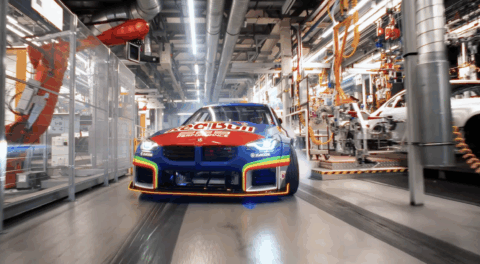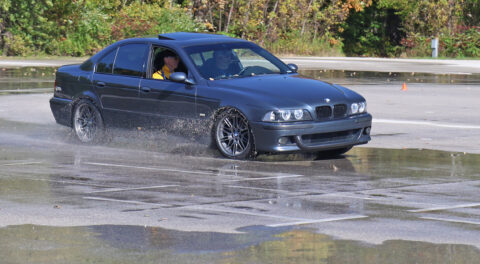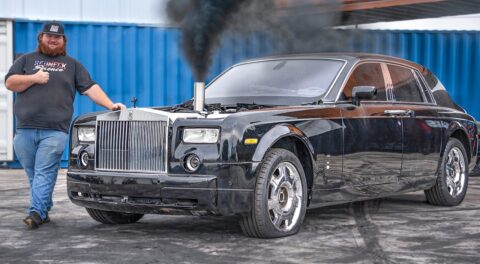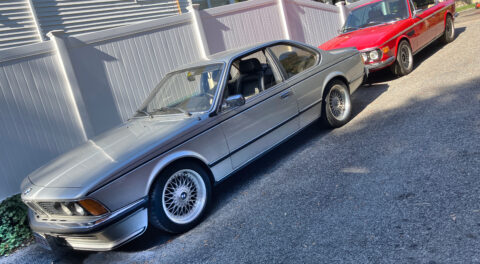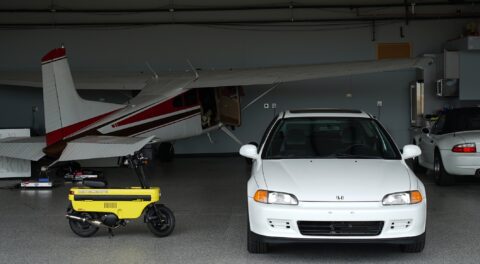Last week, I was insufferably pleased with myself when, at zero cost, I fixed the FrankenThirty’s non-sealed non-functional sunroof by epoxying the broken plastic piece of the mechanism that lifts the rear of the sunroof back into place, and using some leftover McMaster-Carr adhesive-backed foam for a seal instead of spending $125 for the correct rubber one. I then left the car in the driveway overnight knowing that rain was in the forecast. In the morning, I found water dripping from the sunroof, and puddles on the seats and on the rug—obviously not the result I was hoping for.
The source of the dripping-from-the-sunroof part was pretty clear. To remove and repair the sunroof, I had to remove the main sliding steel panel, and to do that, I needed to unclip the six snap-in fasteners holding the front of the sliding fabric headliner piece to the underside of the panel, and slide it backward and into the roof. When I was done with the repair, I slid the headliner panel most of the way forward but hadn’t yet snapped it into place. That meant there was maybe an inch of it protruding beneath the rearmost part of the sunroof seal. I believe that what happened was that, during the rain, water got past the seal (as it is almost guaranteed to), but instead of dripping into the four-sided moat that surrounds the sunroof, it dripped onto the headliner panel, and from there into the car. The evidence of this was that the headliner panel was absolutely soaked.

The hard-to-see gap in front of the headliner panel indicates that it wasn’t slid far forward enough, and thus was hanging beneath the rear sunroof seam by about that same amount.
The water on the rug, though, was more concerning because its origin was not clear. It likely could’ve come from two places—a clogged sunroof drain, or incorrect drainage through the cowl. I looked at the latter first.
There are two big vents beneath the windshield wipers that allow fresh air to come in through the heater box. Obviously, rain can get through the vents. Drainage occurs through a hole on the passenger side of the cowl, to which is attached a rubber snorkel often called “the elephant trunk.” The snorkel is often clogged with debris, allowing water to back up into the cowl and get into the heater box through the opening that the fan sits above. As I wrote about several weeks ago, when I bought the car, nearly the entire cowl was stuffed with a big wooly mouse nest, the motherlode of which sat to the left of the blower fan. When I cleaned out the nest, I found that there were some rust perforations beneath it, likely caused by both the high concentration of urine as well as the wooly nesting material being a conduit for moisture. At the time, I left the perforations alone, but it was time to revisit them.
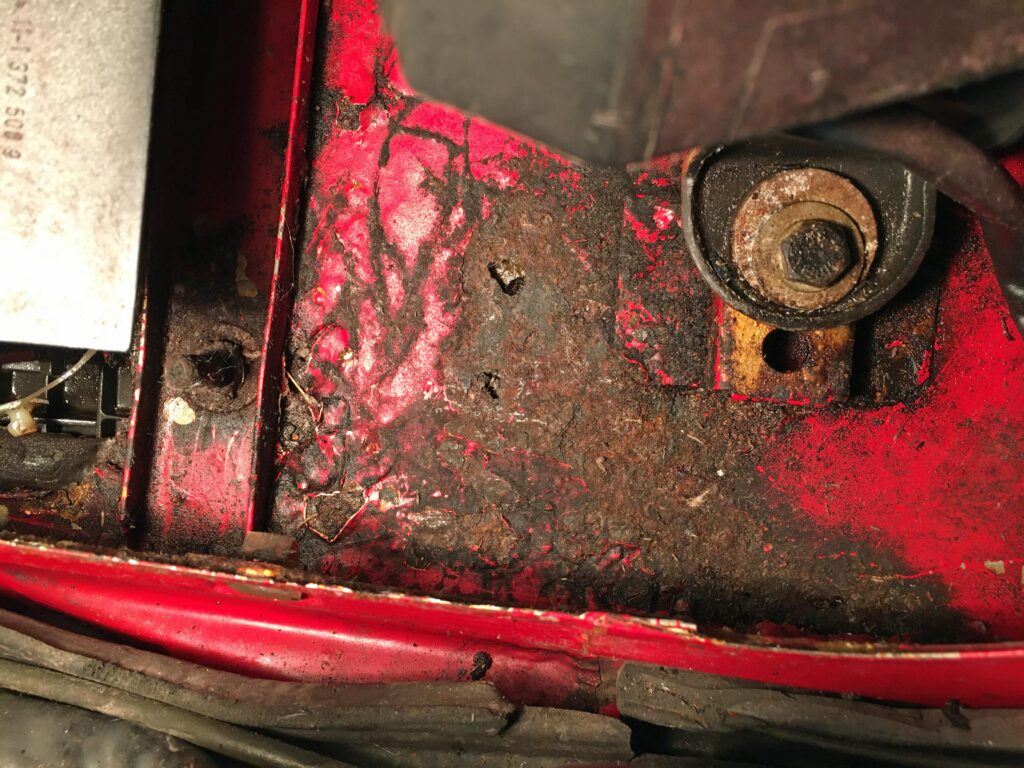
The rusted area before further cleaning and treating.
I removed the cowl cover again and inspected the area. The main perforations were pretty far above the water path, but there was a corroded area in the trough the water follows beneath the opening for the heater box on the way to run out through the snorkel hole. Although I felt it was unlikely that this was the vector for the water on the rug, I took the opportunity to clean the area as best I could, and plug the holes with POR-15 rust hole filler.
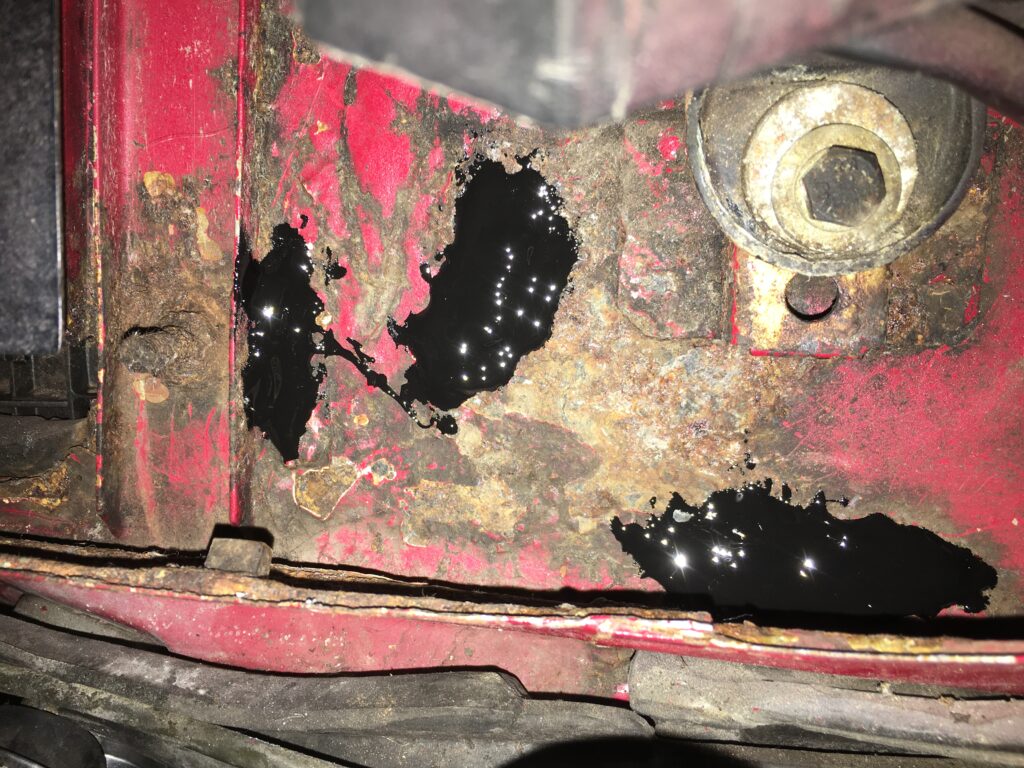
The still-wet POR15 rust hole filler.
Next, I looked at the sunroof drainage itself. Every sunroof installed in the last 50 years, probably more, has a tray with a four-sided moat beneath it with a drain port at each corner and a hose attached to each port. The front hoses run down the A-pillars, the rear ones down the C-pillars. When I was fixing the sunroof, I’d made sure the front drains weren’t clogged by running a length of 12-gauge wire down them. The rear ones are too far back under the roof to easily do that to. But this time, I checked all four by actually pouring water into the ports.
Since my driveway slopes down and the car was parked nose-in, I began with the front drains. The right-front drain worked perfectly; even from where I was standing on the left side of the car, I could hear and see the water hitting the driveway. But when I poured water down the left-front drain spout, only a few drops of water emerged. I continued the testing and spun the car around to check the rear drains. I was a bit surprised that water poured out from behind the black plastic trim on the ears of the rear bumper, but I checked online and found that that’s correct.
I returned to testing the driver’s side front drain. This time, I poured about a quart of water into the port. Again, just a few drops came out from near the front of the rocker panel. But then I noticed that water was beginning to drip out beneath the front of the floor pan. I looked inside the car and was startled to see that the driver’s side rug was now soaked and the bottom of the accelerator pedal was sitting in a pool of water.
Hmmm.
Obviously, I needed to check where the front sunroof drains exit. I’ve owned E30s before, so I knew where these were. There are two oblong holes at the bottoms of the front fenders. I cleaned the ones on the driver’s side with a coat hanger. I dislodged a bit of dirt, but they didn’t seem badly plugged, and more to the point, there was no gush of water.
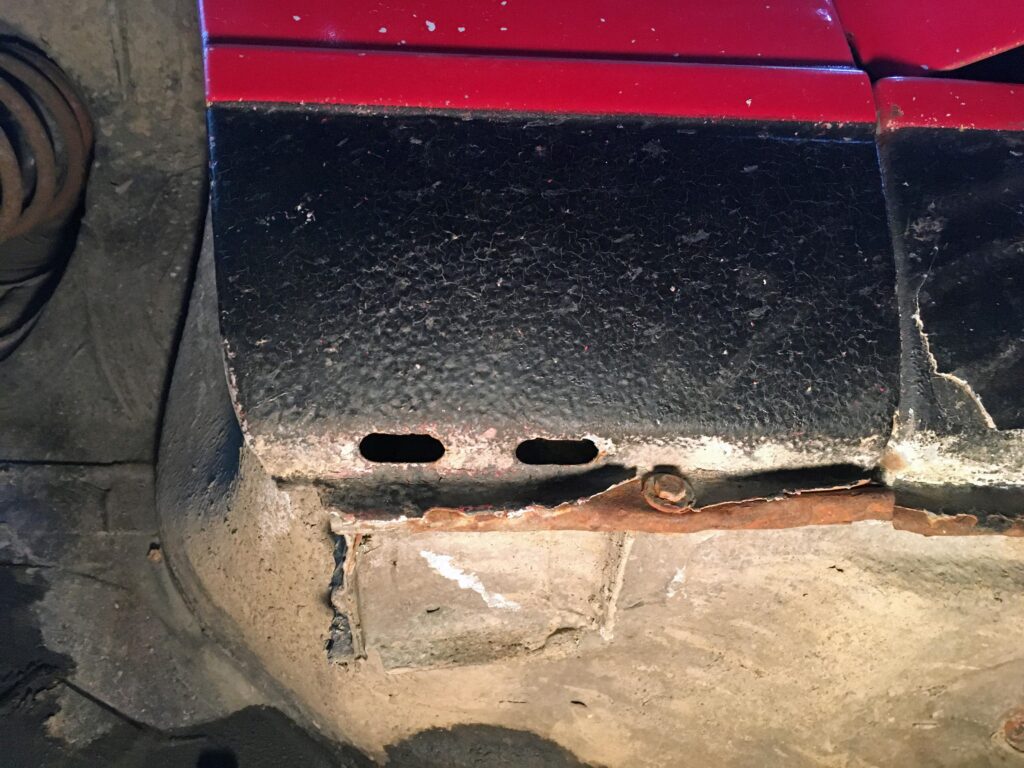
Everyone knows these are the sunroof drain holes on an E30, right?
Okay then. Maybe it was like what happened on my Nissan Armada where one of the hoses had popped off its drain port on the corner of the sunroof tray. To check it, it requires laying eyeballs on the front corners of the tray. This video was enormously helpful in showing the mechanics of dropping the front of the headliner. The Phillips screws holding the visors and the Torx screws holding the visor clips have to come out. Then you remove the seven little Phillips screws holding the little flip-up wind deflector and gently pry it up so it’s not trapping the black piece that runs edge-to-edge and contains the service light panel.
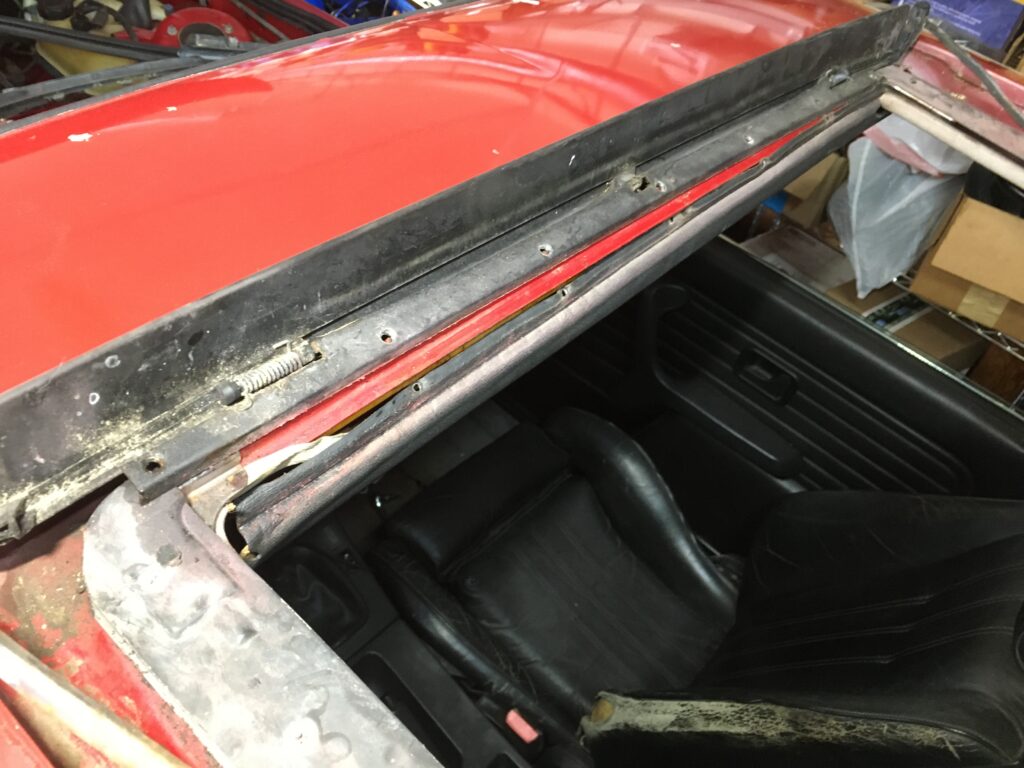
Removing the little flip-up deflector.
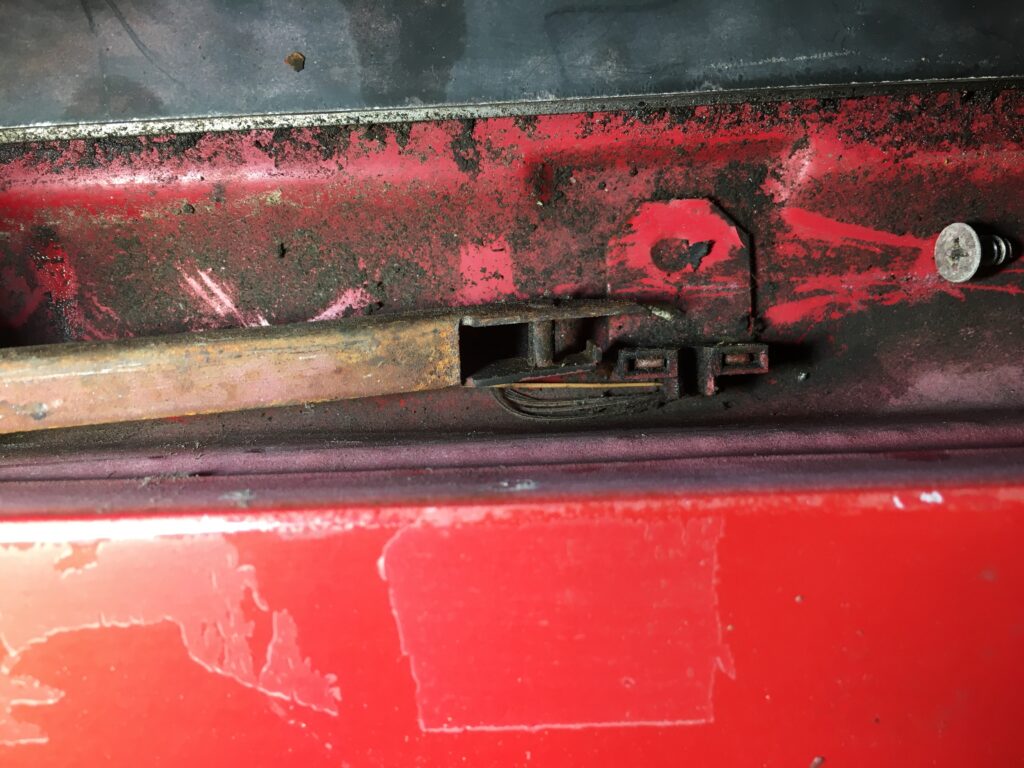
You also need to unclip the deflector arms that extend back. You can see where the little dowel snaps in and out of the slot holding it.
With the deflector unsecured, you can gently lower the black edge-to-edge trim piece that’s secured underneath. When I did, I came face-to-face with a big mouse next.
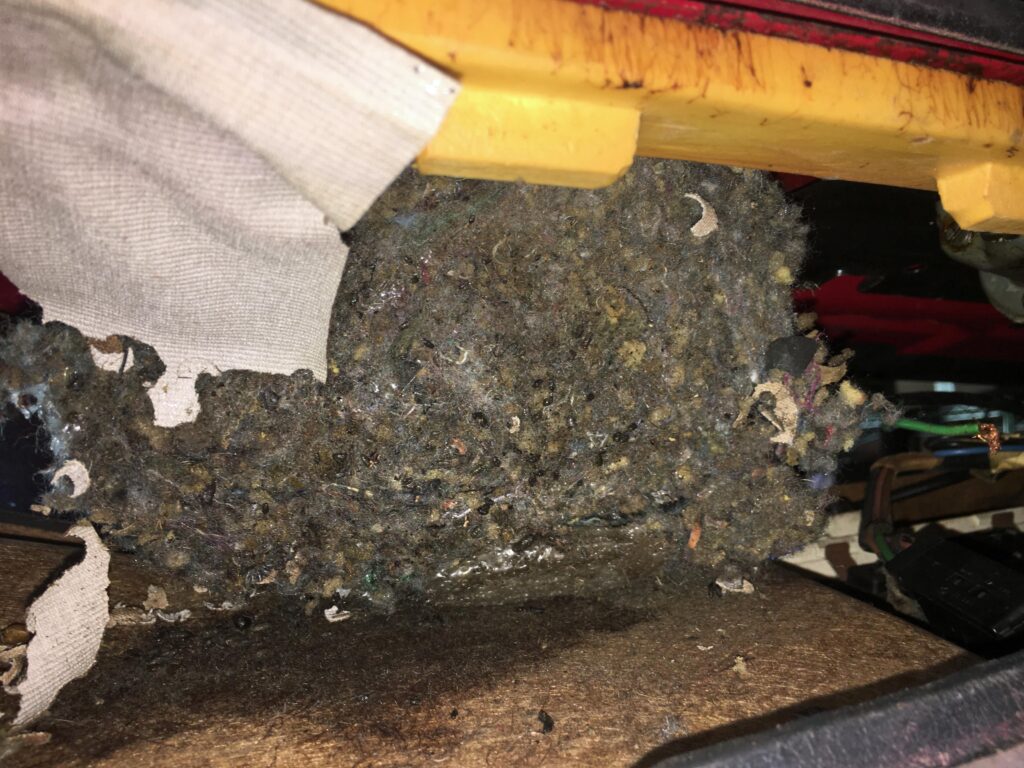
Mice. Why is it ALWAYS freaking mice?
Operation Sunroof Drains came to a smelly halt while I did a time-tested four-prong mouse-nest assault (remove the nest, vacuum the detritus, clean the area, soak it in enzyme-based cleaner). As you can see in the photo above, a portion of the headliner itself had been eaten. Oddly, this had a positive effect, as it was no longer secured beneath the windshield gasket, and it was much easier to see the sunroof drain hose, which appeared to be secure.
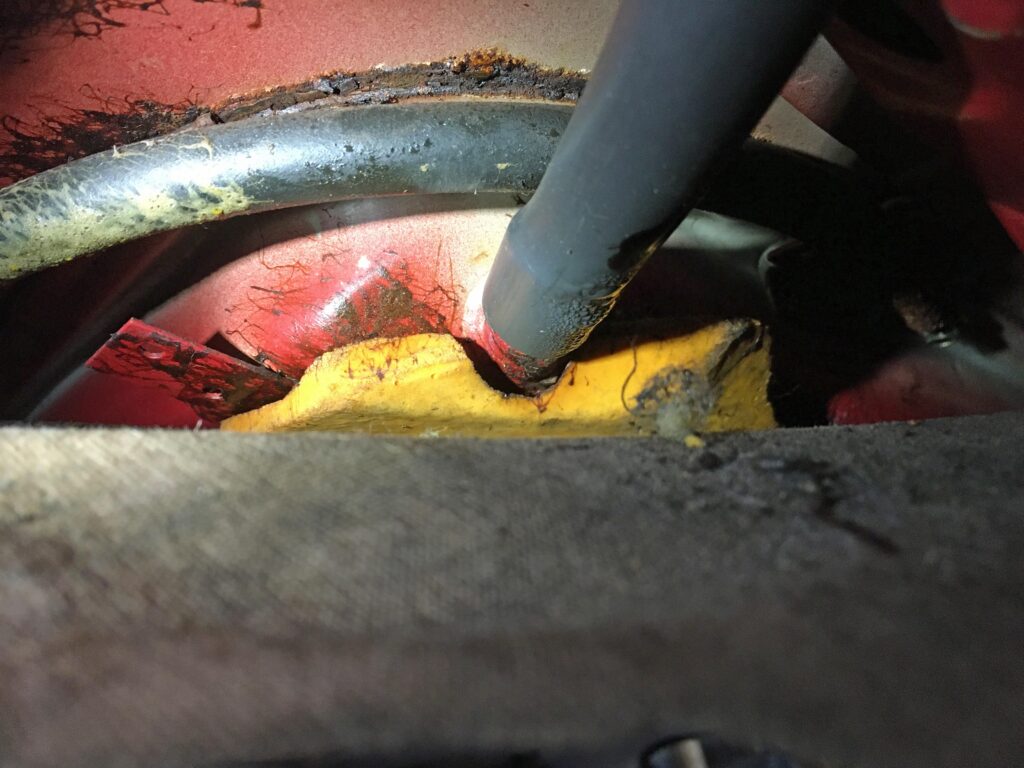
Attached.
Just to be certain, I had one of my kids pour a little water down it while I watched it. None leaked out of the joint between the port and the drain hose. The thing to do was clearly to expose the other end of the hose and see what was going on. So I undid the kick panel and removed the speaker. The end of the drain hose was hanging down into the front of the door sill, positioned in front of a pair of relays mounted on a bracket. I again had one of the kids pour a little water down the drain port, and watched as it emptied out of the hose and into the sill.
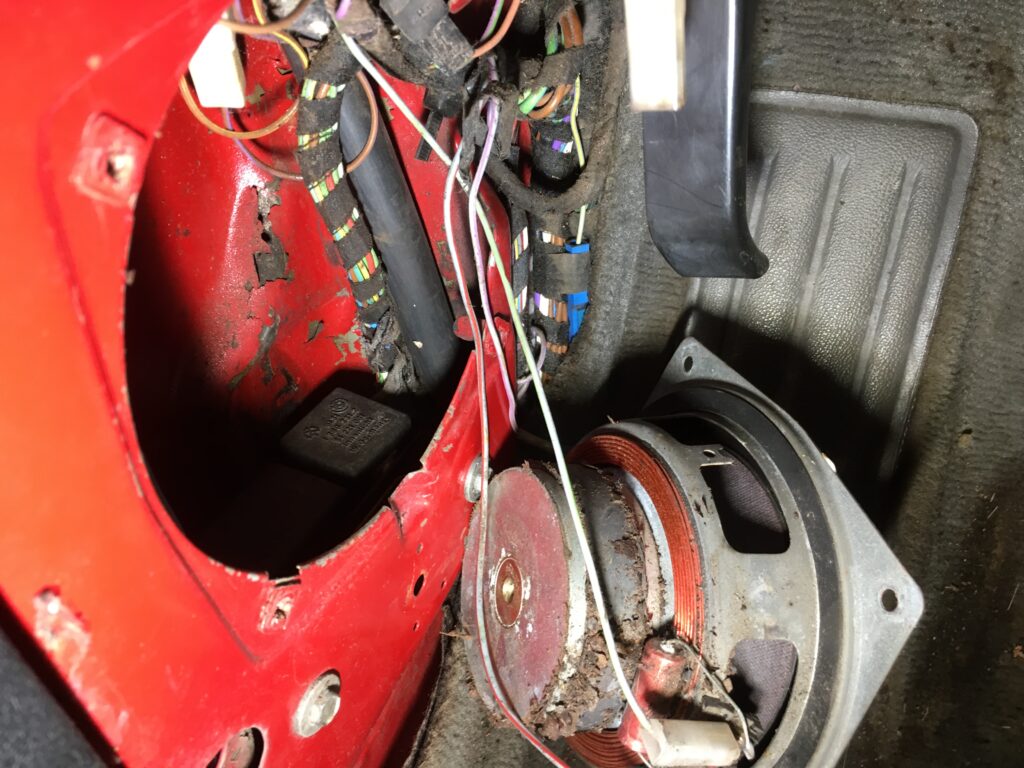
The rubber drain hose hanging into the door sill.
The hose, though, didn’t extend all the way to the bottom of the sill. I wondered if this was due to shrinkage of the rubber with age (cue George Costanza yelling “SHRINKAGE!”), or whether the hose had been cut. I later found photos online of other hoses cut at this angle, so I think it probably shrunk up a bit with age.
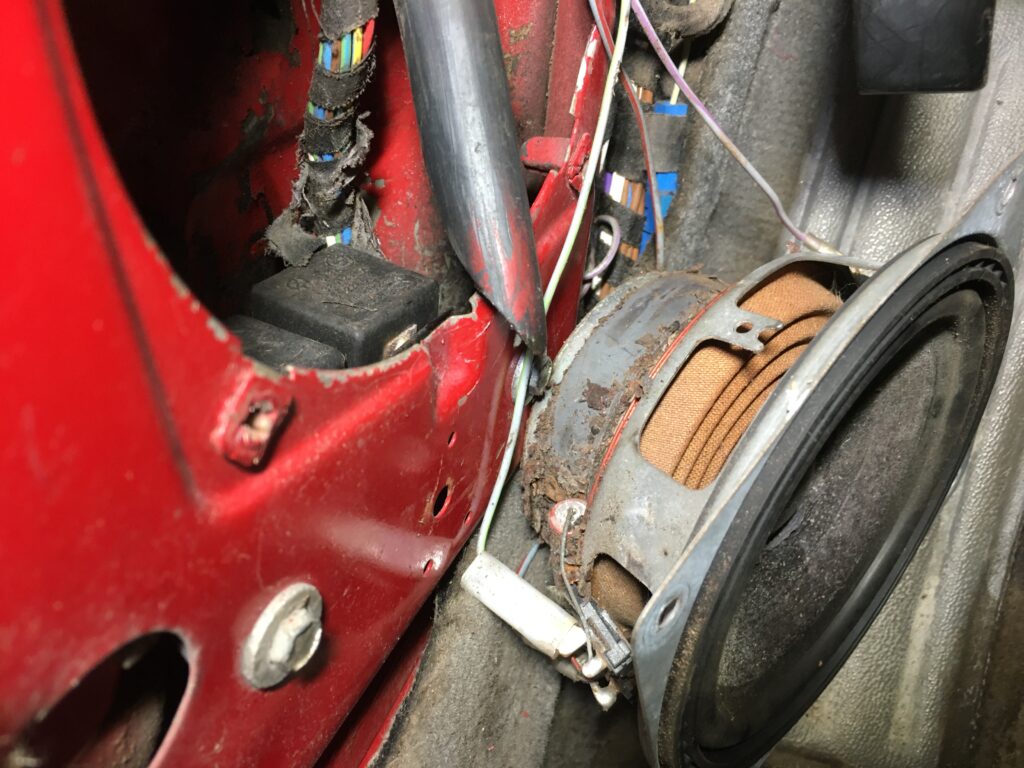
Was this normal? I wasn’t sure.
But the oddest thing of all was that I couldn’t see the connection between the sill well over which the hose hung, and the drain holes in the bottom of the fender. I poked the hanger up through the holes and tried to feel for it in the well and couldn’t find it. I wondered if, in the FrankenThirty’s dark shameful rebuilt salvage-title past, the connection between the two had been welded up. I removed the plastic inner fender liner so I could look at the back of the drain holes. When I did, I came to a startling realization.
Despite the fact that the web is littered with references to these oblong holes at the bottoms of the front fenders being sunroof drain holes, they’re not. They’re there to allow water that gets past the fender liner to drain. The sunroof DOES NOT drain through them. Anyone who says it does, including me above, is dead wrong.
Then where the hell are the drain holes?
I had to search more than expected to find the correct answer.
The rubber hoses from the front sunroof drains empty into the sills. Each sill has a pair of drain holes, but they’re not on the outer rocker panel, and they’re not visible from the side of the car. They’re a pair of little downward-facing mouths that are on the inner part of the sill to which the rocker panel is pinch-welded. You can only see them if you jack up the car, stick your head under it, and look outward. To show their location, I’m borrowing a ten-year-old cutaway photo I found at https://www.r3vlimited.com/board/forum/e30-technical-forums/e30-faq-and-diy/52787-water-leaks-fix/page7 posted by “Striker01.”

You can see that the first drain hole is about beneath the rubber hose, and the second one is further back along the rocker panel. (photo courtesy Striker01, r3vlimited.com)
Armed with that knowledge, I jacked up the car and crawled beneath it. The rear drain hole was plainly visible. I poked it with the hanger, dislodged the sediment, and the water that had backed up in the sill came gushing out.

The little mouth went Huh-BLARG!
The front drain hole was much more difficult to see, partly because the car had been jacked up by the sill just beneath it and the edge of the rocker panel had been slightly folded over.

It was tough to see even when I was looking right at it.
I swapped a few messages about it with E30 guy Ed MacVaugh. Ed agreed that the holes are difficult to find, and added that they are sometimes sealed up when bodywork is done by folks who don’t know they’re there, or even sealed intentionally under the mistaken impression that the holes were there to drain paint and thinner when the chassis were manufactured.
When I said at the beginning of this piece that there were puddles on the carpet, in retrospect these were probably just drips from the mispositioned headliner panel. It’s certain that I’m the one who overflowed the sill by pouring massive quantities of water into the driver’s side drain port during my testing to make sure it was clear. I needed to lift the rug up and stick a fan under it to get things dried out. However, stains on the carpet and surface rust on the floor indicate that it’s likely that this did happen during the years the car sat outside.
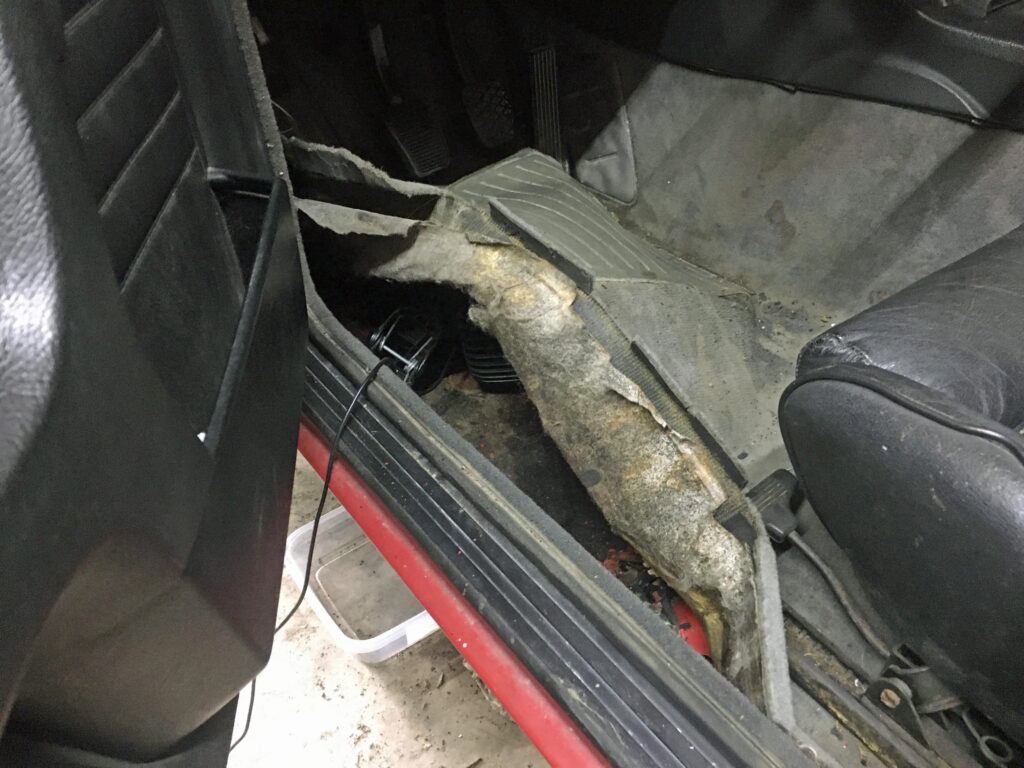
Drying out the soggy aftermath.
The only thing remaining was figuring out why, after this round of work, the electric sunroof motor didn’t engage. I checked with the voltmeter and found that no power was reaching the switch. Then I noticed that there was a blue-and-green wire hanging out in space that had 12V on it. It took a bit of sleuthing to figure out that this wire was supposed to go into the connector for the sunroof switch, but for some reason, there was no crimp-on connector in place for it. The right-angle bend on the wire was a clue that it had been simply shoved inside the channel in the connector housing without anything really securing it, and the male prong on the back of the switch made contact with the bare strands of the wire instead of a female crimp-on counterpart. At first, I thought “well, that’s a total kluge; I’ll fix it more permanently,” but I had no immediate way of doing so without risking damage to the connector housing, so I put it back together the way it had been. I have no intention of using the sunroof anyway; I wanted to—again—close it and leave it closed.

Where do you go?
So it’s all back together again. If I intend to drive the FrankenThirty through the fall, it’s going to need to sit outside (and likely outside under a tarp over the winter), so I’ll certainly have more opportunities to see if it’s going to leak or not. But at least I now know that the drains are all working.
—Rob Siegel
____________________________________
Rob’s newest book, The Best of The Hack Mechanic, is available here on Amazon, as are his seven other books. Signed copies can be ordered directly from Rob here.


